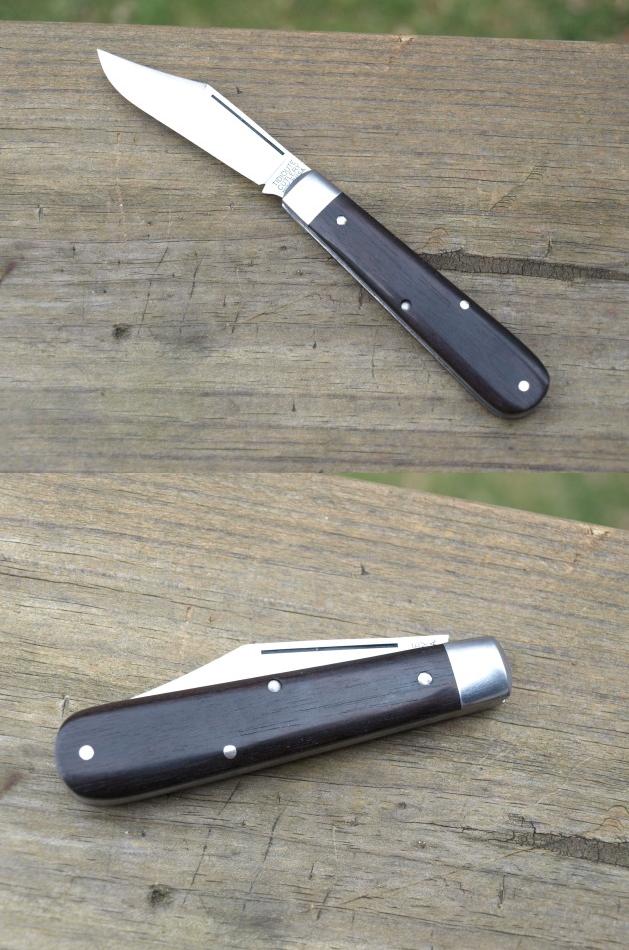I think Damascus was layers of steel and iron somehow (hammer welded?) fused together,and that's what created the patterns. But Im probably way off base on that one...
I once new a 'smith who hammer welded cable to form his "Damascus". I was told the cable had steel and (I think) iron strands. Might be cheating a bit but he created some cool patterns with the process.
EDIT
Sorry but I find this kind of stuff fascinating!
Ran across this today,think it's legit?
"(Continued from Page 1)
The word 'nanotechnology' might seem a little odd to be applied to a technology that is clearly several centuries old. After all, a 'nanometer' is something that means one billionth part of meter, something no one could have measured until very recently. But in this sense, nanotechnology refers to the purposeful (and accidental) inclusion of very very tiny amounts of materials to create chemical reactions at the quantum level. Nanotechnology played a role in the mixing of Maya blue, that amazing color in Maya murals from 8th century America. Stained glass windows from the European Renaissance, colored glasses in Bronze Age Egypt, and violins from the 18th century master Stradivari all benefited from the creative use of tiny amounts of inclusions of foreign matter placed into created objects, creating quantum level qualitative changes in the product. Nanotechnology then is alchemy in its most pure form.
And so, nanotechnology--the inclusion of tiny amounts of foreign matter into a smelted iron product--had a crucial role in the construction of the Damascan blade. But... what were those elements and how did they get in there? The secret alchemy of making a Damascan blade was lost by the middle of the 18th century. European blacksmiths before then, and all those who came before the end of the last century who attempted to make their own blades failed to overcome the problems inherent in a high-carbon content, and could not explain how ancient Syrian blacksmiths achieved the filigreed surface and quality of the finished product.
Damascan Steel and Electron Microscopy
What the research team led by Paufler has done has been to use current nanotechnology to examine the microstructure of a Damascan blade using a scanning electron microscope. Investigations have determined that there are two pieces involved to this puzzle: both inclusions into the raw ore itself and the forging process completed in the mideast. Known purposeful additions to Wootz steel include the bark of Cassia auriculata (used in tanning) and the leaves of Calotropis gigantea (a milkweed). Spectroscopy has also identified tiny amounts of vanadium, chromium, manganese, cobalt, and nickel, and some rare elements, traces of which presumably came from the mines in India.
These materials were already in the raw steel, but what Paufler and associates also identified in the steel were quantum level changes made in the metal which must have occurred during manufacture. They postulate that during the smith's cyclic heating and forging processes, the metal developed a microstructure called 'carbide nanotubes', extremely hard tubes of carbon that are expressed on the surface and create the blade's hardness. Thus, by blending the unique characteristics of Wootz steel with a forging process that included tiny amounts of specialized materials, the blacksmiths of the Islamic Civilization were able to create the Damascan steel. What happened in the mid-18th century was that the chemical makeup of the raw material altered--the minute quantities of one or more of the minerals disappeared, perhaps because the particular lode was exhausted. Such a difference would not have been apparent to the blacksmith visually; but, interestingly, the blacksmiths may have extended the life of the process by including small pieces of the previous batch in each new batch.
We modern archaeologists like to say that the elite stuff, the expensive goods that were restricted to the upper classes, really have no interest to us. But cracking the code of how metallurgists made the elite Damascus steel! I vote for that.




 . Any tips on keeping my damascus nice, I read just keep it dry and oil every now and then, anything else? Also
. Any tips on keeping my damascus nice, I read just keep it dry and oil every now and then, anything else? Also 

